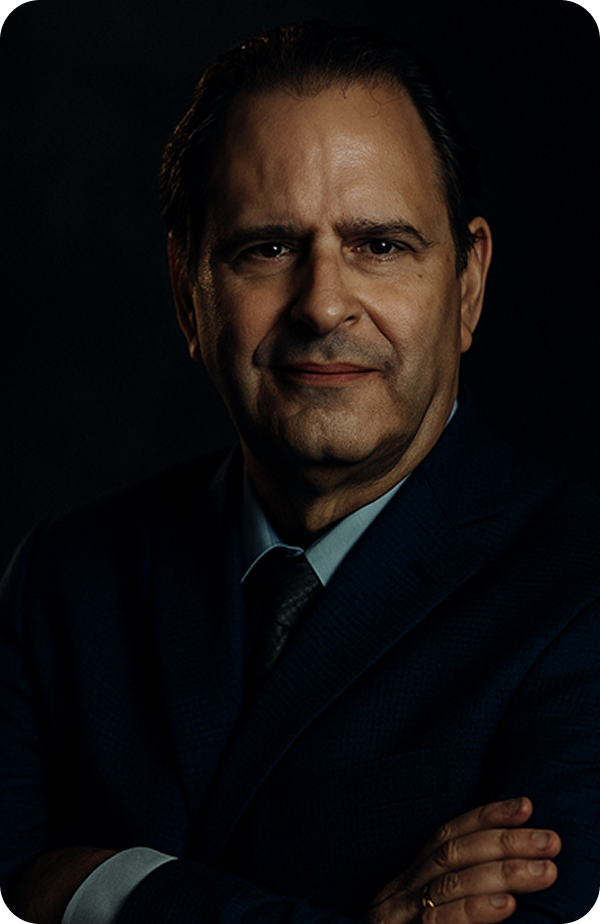Introduction
Proving bona fide marriage best evidence list immigration requires a comprehensive documentation strategy that satisfies USCIS requirements for marriage-based green cards, K-1 visa adjustments, and conditional residence removal. Immigration officials scrutinize marriage-based petitions extensively due to high rates of marriage fraud, making proper evidence compilation critical for approval. A marriage certificate alone proves legal validity but not the authenticity of your marital relationship under immigration law. To prove a bona fide marriage, you must provide a marriage certificate with your green card application, but that alone is not enough.
This comprehensive guide addresses the search intent of couples preparing I-130 petitions, I-751 conditional residence removal applications, and marriage-based immigration interviews with complete evidence checklists and submission strategies.
What This Guide Covers
This guide provides USCIS-prioritized evidence categories, document organization strategies, Ohio-specific immigration resources, common pitfalls to avoid, and attorney comparison frameworks. We focus specifically on marriage green card evidence requirements while noting relevant K-1 visa adjustment considerations.

Who This Is For
This guide is designed for U.S. citizens and permanent residents sponsoring foreign spouses, conditional residents removing conditions on their green cards, K-1 visa holders adjusting status to permanent residence, and Ohio residents seeking local immigration services. Whether you’re newlyweds with limited joint finances or established couples with complex documentation needs, you’ll find targeted strategies for your situation.
Why This Matters
USCIS denial rates for insufficient evidence can derail immigration timelines and cost thousands in reapplication fees. Marriage fraud detection methods have become increasingly sophisticated, with immigration officials trained to identify red flags and inconsistencies. Proper evidence compilation protects your case from administrative processing delays and potential fraud allegations while demonstrating your good faith marriage convincingly. The most effective way to prove a bona fide marriage for immigration purposes is to submit a wide range of evidence demonstrating a shared life.
What You’ll Learn:
- USCIS-prioritized evidence categories and their relative importance in adjudication
- Document organization strategies that streamline review and reduce processing delays
- Ohio immigration attorney comparison framework for selecting representation
- Interview preparation checklist specific to bona fide marriage verification
- Common evidence gaps and proven solutions for challenging circumstances
- USCIS looks for evidence such as joint bank accounts, shared leases, and affidavits from friends to establish the authenticity of a marriage

Understanding Bona Fide Marriage Requirements for Immigration
A bona fide marriage under immigration law represents a genuine marital relationship entered in good faith with the intention of establishing a shared life together, explicitly excluding arrangements created solely to obtain immigration benefits. The term derives from Latin meaning “good faith” and serves as the cornerstone legal requirement distinguishing legitimate marriages from fraudulent marriages designed to circumvent immigration laws.
USCIS evaluates three critical elements when determining bona fides: the legal validity of your marriage ceremony, evidence of shared life circumstances demonstrating genuine commitment, and proof of intent to build a future together rather than a transactional arrangement for immigration benefit. Immigration authorities must see evidence beyond your marriage certificate showing financial integration, cohabitation, and social recognition of your marital relationship.
The legal consequences of marriage fraud include criminal penalties up to five years imprisonment, fines reaching $250,000, immediate deportation proceedings, and permanent bars to future immigration benefits. These severe penalties explain why USCIS officers receive extensive training in fraud detection and why proper evidence preparation is essential for legitimate couples.
USCIS Fraud Detection Methods
Immigration officials employ sophisticated administrative processing procedures to verify marital relationships, including background investigations that can extend processing times significantly. Computer algorithms flag applications with red flags such as large age gaps, cultural differences, short courtships before marriage, or separate residences without reasonable explanations.
The relationship between your initial petition evidence and subsequent interview questioning strategies means inconsistent documentation can trigger intensive scrutiny during your green card interview. Officers compare spouse responses about household details, relationship history, and future plans to identify discrepancies suggesting fraudulent marriages.
Ohio Immigration Context and Local Considerations
Ohio USCIS field offices in Cleveland and Cincinnati process thousands of marriage-based petitions annually, with local officers familiar with Ohio-specific documentation patterns and regional marriage trends. Understanding that Ohio recognizes only ceremonial marriages (not common-law marriages) affects evidence strategy for couples who may have believed they established common-law relationships.
State-specific documents including Ohio marriage licenses, county property records, and Ohio driver’s license requirements create opportunities for comprehensive evidence compilation that demonstrates genuine Ohio residency and shared life establishment within the state.
Transition: Understanding these foundational requirements leads directly to examining which specific evidence categories carry the most weight in USCIS adjudications.

Essential Evidence Categories: USCIS Priority Ranking
USCIS adjudicators follow established hierarchies when evaluating marriage evidence, with certain document types carrying significantly more weight than others in determining bona fides. Immigration officers spend limited time reviewing each case, making evidence organization and quality crucial for favorable outcomes.
Tier 1: High-Impact Financial Evidence
Joint tax returns filed as “married filing jointly” represent the strongest evidence of marital commitment because they demonstrate official financial integration and long-term planning. Multiple years of joint tax returns filed consecutively show sustained marriage commitment over time, making this documentation particularly convincing proof for immigration officials.
Joint bank statements showing regular deposits from both spouses, shared expenses for household evidence, and account longevity provide strong evidence of financial interdependence. Bank accounts opened shortly after marriage with consistent activity demonstrate genuine shared financial planning rather than accounts created solely for immigration purposes.
Life insurance policies and retirement accounts listing your spouse as primary beneficiary indicate long-term commitment and shared future planning. These investment accounts and mutual funds show financial planning beyond immediate immigration needs, addressing USCIS concerns about temporary marriage arrangements.
Credit card statements from joint accounts reveal daily spending patterns and shared household expenses that fraudulent marriages typically cannot sustain consistently. Joint responsibility for major purchases like vehicles, appliances, and wedding related expenses demonstrates genuine shared life commitment.
Key Financial Documents:
- Joint tax returns (Form 1040) filed as “married filing jointly” for multiple years
- Joint bank account statements showing regular deposits and shared expenses
- Joint credit cards, loans, and mortgage applications with both spouses as co-applicants
- Life insurance policies listing spouse as primary beneficiary
- Joint property ownership documents including Ohio property deeds and vehicle titles
Tier 2: Cohabitation and Shared Living Evidence
Lease agreements or mortgage documents showing both spouses’ names establish shared residency at the same address, fundamental to proving genuine marital relationships. Ohio property records and joint leases provide particularly strong evidence when supported by consistent utility bills and mail delivery records.
Utility bills including electric, gas, water, and internet services showing both spouses’ names at the same address demonstrate sustained cohabitation rather than temporary arrangements. Other utility bills and household evidence accumulate over time, creating documentation patterns difficult to fabricate consistently.
Ohio driver’s licenses and voter registration cards with matching addresses support cohabitation claims while demonstrating integration into Ohio communities. Official correspondence delivered to both spouses at shared addresses reinforces residency evidence through multiple independent sources.
Joint insurance policies including health insurance where one spouse covers the other under the same plan, homeowner’s insurance, and vehicle insurance demonstrate shared risk management and legal recognition of marital relationship.
Tier 3: Social and Family Integration Evidence
Birth certificates for children born to the marriage provide compelling evidence of genuine relationship commitment and shared future planning. Children born to the union represent investment in long-term relationship success that circumventing immigration laws cannot easily simulate. Evidence of children born to the marriage or adopted together is considered very strong proof of a genuine marriage.
Wedding photos accompanied by guest attendance records demonstrate public celebration and family acceptance of your marriage. These images should show family members from both sides participating in ceremonies and reception activities, indicating genuine relationship recognition beyond the couple themselves.
Travel documentation including plane tickets, hotel receipts, and vacation photos showing joint trips demonstrates shared experiences and relationship investment. Passport stamps showing travel to each spouse’s home country indicate genuine effort to integrate families and understand cultural backgrounds.
Family photos taken over time with extended family members show relationship progression and acceptance within established family networks, addressing USCIS concerns about sudden relationship developments.
Transition: With evidence categories established, the next critical step involves systematic organization strategies that maximize your documentation’s impact during USCIS review.

Step-by-Step Evidence Organization Strategy
USCIS adjudicators review hundreds of cases monthly under significant time pressure, making clear organization essential for ensuring your strongest evidence receives proper attention. Immigration cases succeed when officers can quickly locate and verify key documentation without confusion or administrative delays.
Document Collection Timeline
When to use this approach: Systematic evidence compilation works best for engaged couples planning marriage green card petitions and newlyweds beginning their immigration journey together.
- Pre-marriage evidence gathering: Collect engagement photos, wedding planning documents, venue contracts, and communication records showing relationship development before marriage
- First 6 months post-marriage focus: Open joint bank accounts, update insurance beneficiaries, change addresses with employers, and establish shared financial accounts immediately after marriage
- 6-24 months ongoing documentation: File joint tax returns, make major purchases together, travel internationally as married couple, and document family integration activities
- Pre-submission review and organization: Arrange documents chronologically, obtain certified translations for foreign documents, and ensure all Ohio-specific requirements are met including proper notarization
Evidence Portfolio Compilation
| Evidence Category | Newly Married (Under 6 months) | Established Marriage (2+ years) |
|---|---|---|
| Financial Integration | Joint bank account opening, insurance changes | Multiple tax returns, major purchases, retirement planning |
| Cohabitation | Lease renewal, address changes | Utility bill history, property ownership, renovation records |
| Social Integration | Wedding photos, honeymoon travel | Family photos over time, community involvement, joint memberships |
Quality trumps quantity in immigration evidence submission. Immigration officials prefer representative sampling of strong evidence over voluminous documentation that dilutes your strongest proof. Focus on documents that span multiple time periods and demonstrate consistent pattern of genuine marital relationship. Providing more evidence is generally better to support your marriage application and avoid scrutiny from USCIS.
Ohio-specific requirements include state document authentication through Ohio Secretary of State offices and notarization requirements that may differ from other states. Local notary requirements must be met for certain affidavits and translated documents before USCIS submission.
Transition: Even well-organized evidence can face challenges requiring targeted solutions, particularly for couples with unique circumstances.
Common Challenges and Ohio-Specific Solutions
Immigration cases often involve couples whose circumstances don’t fit standard evidence patterns, creating documentation challenges that require creative solutions. Ohio residents have access to specific resources and alternative documentation strategies that can address common evidence gaps effectively.
Challenge 1: Limited Joint Financial History
Solution: Third-party affidavits from family members and friends detailing relationship observations, wedding attendance, and ongoing interaction with the couple as a married unit provide independent verification when financial evidence is limited.
Written statements should describe the affiant’s relationship to the couple, specific observations of genuine affection and shared planning, and details about wedding attendance or family gatherings where the couple interacted naturally. Emergency contact listings showing spouse information at workplaces and medical facilities demonstrate practical recognition of marital relationship.
Video calls and communication records showing regular contact patterns help establish relationship authenticity when physical financial integration remains limited due to immigration status restrictions or economic circumstances.
Challenge 2: Separate Living Arrangements
Solution: Joint explanatory letter detailing work obligations, educational requirements, or family circumstances requiring temporary separation, supported by employment documentation, school enrollment records, or family emergency documentation.
Organize evidence showing regular visitation patterns, shared vacation planning, and documented future cohabitation plans including Ohio property searches, lease applications, or job search activities in the same city. Plane tickets and travel records showing frequent visits between separate residences demonstrate commitment to maintaining relationship despite physical distance.
Challenge 3: Cultural or Language Barriers
Solution: Certified translations of foreign documents through USCIS-approved Ohio translation services, cultural context explanations describing marriage customs and family integration practices, and evidence of participation in both American and ethnic community activities.
Ohio resources include certified translation services in Cleveland, Cincinnati, and Columbus with established USCIS acceptance records. Document your spouse’s integration into American culture while maintaining heritage connections, showing genuine relationship development rather than purely transactional marriage arrangement.
Transition: Addressing these challenges often requires professional guidance from experienced immigration attorneys familiar with Ohio-specific procedures and local USCIS office practices.
Ohio Immigration Attorney Comparison and Selection Guide
Marriage-based immigration cases benefit significantly from professional representation, particularly when evidence compilation challenges arise or interviews require preparation. Ohio residents can choose between local attorneys with regional expertise and national firms with specialized resources, each offering distinct advantages.

Ohio Immigration Attorneys: Local Advantages
Ohio immigration lawyers bring familiarity with Cleveland and Cincinnati USCIS field office procedures, including local officer tendencies and processing timelines that can affect case strategy. Established relationships with Ohio document preparation services, certified translation providers, and local notary services streamline evidence compilation processes.
Knowledge of Ohio marriage and property laws affects evidence compilation strategies, particularly regarding joint property ownership, state tax filing requirements, and local residence documentation. Ohio attorneys typically offer competitive fee structures compared to major metropolitan markets while maintaining specialized immigration law expertise.
Local attorneys provide convenient in-person consultations for Ohio residents, making document review and interview preparation more accessible. Understanding Ohio community resources helps attorneys connect clients with translation services, cultural organizations, and family support networks that strengthen immigration cases.
National Immigration Firms: Resource Advantages
National immigration law firms often possess specialized marriage fraud defense experience and complex case handling capabilities that regional practices may lack. Technology platforms for document organization, case management, and client communication can provide superior service delivery for complicated cases.
Higher volume experience with diverse cultural backgrounds and international marriage scenarios helps national firms address unique challenges that local attorneys encounter less frequently. Appellate and federal court representation capabilities prove crucial for denied cases requiring appeals or complex legal challenges.
Some national firms maintain Ohio offices or partner with local attorneys, combining national expertise with regional knowledge. These arrangements can provide optimal service delivery for clients requiring specialized knowledge while maintaining local accessibility.
Selection Criteria:
- Case complexity: Simple cases may benefit from local expertise; complex cases may require national firm resources
- Budget considerations: Ohio attorneys typically offer lower fee structures for straightforward cases
- Geographic convenience: Local attorneys provide easier access for multiple meetings and document reviews
- Specialized experience: National firms may offer superior experience with specific cultural or legal challenges
Transition: Whether working with local or national representation, understanding common questions helps prepare for the immigration process ahead.
Comprehensive FAQ: Ohio Marriage-Based Immigration
Evidence and Documentation Questions
Q: How many bank statements should we submit to prove our joint bank accounts? A: Submit 12-24 months of joint bank account statements showing consistent activity, deposits from both spouses, and shared household expenses. Quality matters more than quantity – focus on statements showing genuine financial integration rather than accounts opened solely for immigration purposes.
Q: Can we submit utility bills in only one spouse’s name if we live at the same address? A: Yes, but include a letter explaining the arrangement and submit additional evidence like joint lease agreements, insurance policies listing both spouses, or other documents showing both names at the same address. Single-name utility bills are common and acceptable when properly explained.
Q: Do we need birth certificates for children from previous marriages? A: Include birth certificates for all children either spouse is raising, as this demonstrates family integration and shared responsibility. Children from previous marriages often strengthen bona fide marriage evidence by showing blended family commitment.
Q: How important are wedding photos compared to financial documents? A: Financial documents like joint tax returns and bank statements carry more weight, but wedding photos provide valuable supporting evidence. Include 15-20 wedding photos showing family attendance, ceremony details, and reception activities rather than hundreds of similar images.
Timeline and Process Questions
Q: How long does the marriage green card interview take in Ohio? A: Cleveland and Cincinnati USCIS offices typically schedule interviews lasting 20-45 minutes, depending on case complexity. Simple cases with strong evidence may conclude quickly, while cases requiring additional documentation review can extend longer.
Q: Can we submit additional evidence after filing our I-130 petition? A: Yes, you can submit additional evidence at any time before your interview. If your circumstances change or you obtain stronger documentation, send updates to USCIS with your case number and receipt notice information.
Q: What happens if we’re previously married and divorced? A: Include your divorce decree or annulment certificate to prove your previous marriage ended legally. Previously married individuals must demonstrate their current marriage’s validity and that all prior marriages terminated properly.
Ohio-Specific Questions
Q: Do Ohio marriage licenses require specific documentation for immigration purposes? A: Ohio marriage certificates issued by county clerks are sufficient for USCIS purposes. Ensure your marriage certificate includes both spouses’ full names, marriage date, and official certification. Ohio recognizes marriages performed in other states and countries if valid where performed.
Q: Are there certified translation services in Ohio that USCIS accepts? A: Yes, certified translation services in Cleveland, Cincinnati, Columbus, and Toledo provide USCIS-acceptable translations. Translators must provide certification stating their qualifications and translation accuracy. Avoid using family members or friends for official document translation.
Q: Can Ohio residents attend interviews at Detroit or Chicago USCIS offices instead? A: Ohio residents must attend interviews at their assigned office based on residence address – typically Cleveland for northern Ohio and Cincinnati for southern Ohio. USCIS rarely approves office transfer requests except for legitimate hardship situations.
Legal and Procedural Questions
Q: What constitutes strong evidence of good faith marriage? A: Strong evidence includes joint tax returns filed as “married filing jointly,” joint bank account statements with regular activity, lease agreements showing both names, life insurance policies listing spouse as beneficiary, and birth certificates for children born to the marriage. More convincing proof demonstrates financial integration and shared life commitment.
Q: How do immigration officials detect fraudulent marriages? A: USCIS officers look for red flags including large age differences, short courtship periods, separate residences without explanation, limited financial integration, and inconsistent interview responses. Sham marriages typically cannot maintain consistent evidence patterns over extended periods.
Q: What should we do if our case goes into administrative processing? A: Administrative processing indicates USCIS requires additional time for background checks or evidence review. Continue maintaining your marital relationship, document ongoing shared activities, and consult with an immigration lawyer if processing extends beyond normal timeframes. Avoid contacting USCIS frequently about status updates.
Transition: Armed with this comprehensive knowledge, you’re ready to take concrete steps toward successful marriage-based immigration petition approval.
Conclusion and Next Steps
Successfully proving your bona fide marriage requires systematic evidence compilation focusing on financial integration, shared residency, and social recognition of your marital relationship. USCIS prioritizes joint tax returns, bank statements, and cohabitation evidence while supporting documentation like wedding photos and family affidavits strengthens your overall case presentation.
To get started:
- Complete evidence inventory assessment: Review your current documentation against USCIS requirements and identify gaps requiring attention before petition submission
- Schedule consultation with qualified Ohio immigration attorney: Professional guidance helps navigate complex requirements and avoid costly mistakes during evidence compilation
- Begin systematic document collection and organization: Establish timeline-based filing system that demonstrates relationship progression and genuine marital commitment
Immediate Action Items:
- Open joint bank accounts and update insurance beneficiaries if not already completed
- Compile 2-3 years of the strongest evidence from each category rather than submitting every available document
- Research Ohio immigration attorneys and schedule consultations to compare services and fee structures
Related Topics: K-1 visa evidence requirements differ slightly from marriage green card documentation, focusing on pre-marriage relationship proof rather than post-marriage integration. I-751 conditional residence removal requires updated evidence showing continued marital relationship two years after conditional green card approval. Marriage fraud defense becomes necessary if USCIS questions your relationship authenticity, requiring specialized legal representation and comprehensive evidence supplementation.
Your successful immigration outcome depends on thorough preparation, professional guidance when needed, and consistent demonstration of genuine marital commitment through multiple evidence categories. Ohio couples benefit from local resources and experienced attorneys familiar with regional USCIS office procedures, making professional consultation a valuable investment in your immigration success.
Ohio Immigration Resources Directory
USCIS Field Offices and Services
Cleveland USCIS Field Office
- Address: 1240 East 9th Street, Cleveland, OH 44199
- Phone: 1-800-375-5283
- Services: Marriage-based interviews, naturalization ceremonies, InfoPass appointments
- Jurisdiction: Northern Ohio counties
Cincinnati USCIS Field Office
- Address: 525 Vine Street, Room 4000, Cincinnati, OH 45202
- Phone: 1-800-375-5283
- Services: Marriage-based interviews, adjustment of status, family reunification cases
- Jurisdiction: Southern Ohio counties including Hamilton, Butler, Warren counties
USCIS Forms and Fee Information
- Form I-130 (Petition for Alien Relative): Available at uscis.gov/i-130
- Form I-485 (Adjustment of Status): Available at uscis.gov/i-485
- Current filing fees and payment methods: uscis.gov/fees
- Case status checking: uscis.gov/case-status
- Final authority on required documentation for marriage proof can be found on the USCIS website and policy manuals.
Ohio Marriage License and Document Services
Ohio Secretary of State Document Authentication
- Address: 180 East Broad Street, Columbus, OH 43215
- Phone: (614) 466-2655
- Services: Apostille services, document authentication for international use
- Processing time: 5-10 business days for standard processing
County Marriage License Offices
- Hamilton County (Cincinnati): 230 East 9th Street, Cincinnati, OH 45202
- Cuyahoga County (Cleveland): 1200 Ontario Street, Cleveland, OH 44113
- Franklin County (Columbus): 373 South High Street, Columbus, OH 43215
- Lucas County (Toledo): 1 Government Center, Toledo, OH 43604
Certified Translation Services in Ohio
Cleveland Translation Services
- Language Line Solutions: 1385 York Street, Cincinnati, OH 45214
- Global Language Solutions: 1468 West 9th Street, Cleveland, OH 44113
- Specialization: USCIS-approved immigration document translation
- Languages: Spanish, Arabic, Chinese, Russian, French, Portuguese
Columbus Translation Providers
- Capital City Translations: 1234 East Broad Street, Columbus, OH 43205
- Ohio State University Translation Center: 1735 Neil Avenue, Columbus, OH 43210
- Services: Certified translations with USCIS compliance guarantee
- Turnaround: 3-5 business days for standard documents
Cincinnati Translation Services
- Tri-State Language Services: 425 Walnut Street, Cincinnati, OH 45202
- University of Cincinnati Language Center: 2600 Clifton Avenue, Cincinnati, OH 45221
- Expertise: Marriage certificates, birth certificates, academic transcripts
- Certification: All translators certified and bonded for legal document translation
Immigration Attorney Referral Services
Ohio State Bar Association Immigration Section
- Phone: (614) 487-2050
- Website: ohiobar.org
- Services: Attorney referral service, disciplinary records search
- Specialization filters: Marriage-based immigration, deportation defense, family reunification
American Immigration Lawyers Association (AILA) Ohio Members
- Website: aila.org/lawyer-search
- Geographic filters: Cleveland, Cincinnati, Columbus, Toledo, Akron
- Practice area filters: Family-based immigration, marriage green cards, K-1 visas
- Client review integration: Martindale-Hubbell ratings, Google reviews
Legal Aid and Nonprofit Services
- Legal Aid Society of Cleveland: (216) 687-1900
- Legal Aid of Western Ohio: (419) 724-0441
- Advocates for Basic Legal Equality (Toledo): (419) 255-0814
- Cincinnati Legal Aid: (513) 241-9400
- Services: Low-income immigration assistance, document preparation, know-your-rights workshops
Community Support Organizations
Immigrant Services Organizations
- International Services Center (Cleveland): (216) 830-4200
- Catholic Charities Immigration Services: Multiple Ohio locations
- World Relief Columbus: (614) 235-7870
- US Together (Columbus): (614) 235-5747
- Services: Document preparation assistance, ESL classes, cultural integration support
Cultural Organizations and Community Centers
- Cleveland Cultural Gardens Alliance: Networking and family integration events
- Cincinnati International Festival: Annual multicultural celebration and networking
- Columbus International Program: Corporate and family relocation assistance
- Ohio Hispanic Coalition: Spanish-speaking community support services
All links verified as of publication date. Contact information subject to change; verify current details before visiting offices or scheduling appointments. USCIS policies and procedures may be updated; always check official USCIS website for most current requirements and forms.








